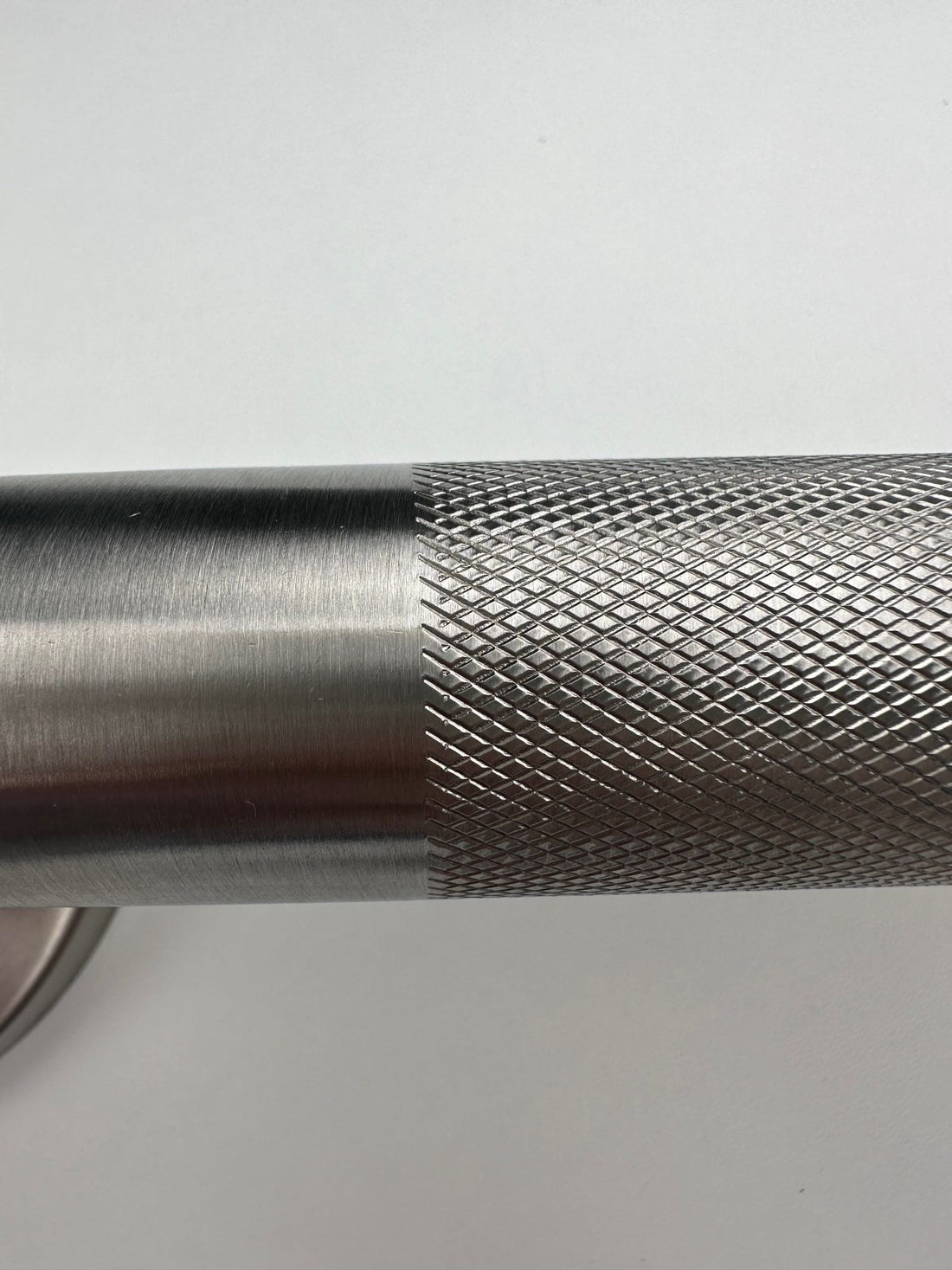
Knurled Grab Bars: The High-Traction, Low-Slip Upgrade Your Bathroom Is Missing
Share
Knurled Grab Bars: The High-Traction, Low-Slip Upgrade Your Bathroom Needs
Most homeowners shopping for grab bars focus on finish and length—but texture is just as important. When hands are wet, soapy, or weak, a smooth bar can feel slick. That’s why knurled grab bars are gaining attention. Their diamond-cut texture delivers secure grip and confidence, making them ideal for showers, entryways, and any area where slips can happen.
What Exactly Is a Knurled Grab Bar?
A knurled grab bar starts as a standard stainless-steel bar. During manufacturing, a precision tool cuts a diamond-pattern texture into its surface. These micro-ridges create more friction between your hand and the metal, improving grip under slippery conditions. It’s a small change with a big impact on everyday safety.
Knurled vs. Peened: Understanding the Difference
Both textures improve grip compared to smooth stainless, but they feel different in the hand. Knurled bars have a more defined, tactile bite—great for wet areas and users with limited grip strength—while peened bars have a softer, dimpled finish that’s easier to clean and slightly gentler to the touch.
| Feature | Knurled | Peened |
|---|---|---|
| Texture Type | Diamond-cut pattern | Lightly etched or hammered texture |
| Grip When Wet | Maximum traction | Moderate traction |
| Hand Feel | More tactile and secure | Smoother, softer |
| Maintenance | Requires a quick brush-clean occasionally | Easier to wipe clean |
When Knurled Grab Bars Make the Most Sense
- Inside showers where hands are wet and soap residue can cause slips.
- High-use bathrooms used by multiple family members or caregivers.
- For users with weaker grip strength—arthritis, post-surgery recovery, or reduced dexterity.
- Entry and exit points like shower thresholds and steps, where traction matters most.
Safety Standards and Installation Tips
Whether for home or public spaces, strong mounting and correct placement matter more than anything else. Grab bars should meet or exceed 250 pounds of load capacity. The ADA provides excellent reference points for residential installation:
- Bar Diameter: 1¼″ to 1½″ for a comfortable grip.
- Wall Clearance: 1½″ between wall and bar for easy hand wrap.
- Surface: Must be smooth and free of sharp edges, even with texture.
- Mounting: Bars must not rotate within their fittings once installed.
Material Options: 304 vs. 316 Stainless Steel
Most grab bars are made from 304 stainless steel, which provides reliable corrosion resistance for indoor use. In coastal areas or pool environments, 316 stainless steel offers superior protection against salt and chlorine, keeping your grab bars looking great for years.
Pros and Cons of Knurled Grab Bars
Pros
- Superior grip in wet conditions
- Ideal for users with limited hand strength
- Reduces slip risk in showers and wet rooms
- Provides maximum confidence when transferring
Cons
- More pronounced texture feel (some prefer smoother peened bars)
- Requires light brushing to remove soap buildup
Best Placement for Knurled Bars
- Shower Back Wall: Horizontal bar for steady movement.
- Shower Entry: Vertical or angled bar for safe step-in and step-out.
- Beside the Toilet: Short bar for reliable support during transfers.
Following these placement guidelines ensures optimal balance, comfort, and usability for all ages.
Maintenance and Care
Knurled grab bars require minimal upkeep. Rinse occasionally and wipe dry to prevent mineral buildup. If needed, use a soft brush and mild soap to clean the diamond texture. Avoid harsh chemicals or abrasives—they can dull the finish.
Take Advantage of Our Exclusive Offer!
Ready to enhance your space with innovative Steady Bars? Don’t miss our special pre-pay promotion—schedule your installation now and save 15% on your purchase!
Why Wait?
Our high-quality products are designed to improve safety and convenience in your home. With our simple pre-pay option, you can enjoy significant savings while securing your installation slot today.
Don’t Miss Out!
Schedule Your Installation & Save Now!Frequently Asked Questions
Are knurled grab bars ADA compliant?
Yes. The ADA requires grab bars to have non-slip, non-abrasive surfaces and support at least 250 pounds. Knurled grab bars meet these standards when properly installed.
Do knurled grab bars hurt your hands?
No, but they are more tactile than smooth or peened bars. Most users prefer the extra texture, especially in wet environments where control matters most.
What’s the difference between 304 and 316 stainless steel?
304 stainless is standard for interior use and resists rust. 316 stainless includes molybdenum, which protects against corrosion from salt air and pool water—ideal for coastal or outdoor bathrooms.
Where should I install knurled grab bars?
Focus on high-risk areas: inside showers, by toilet areas, and at tub or shower entries. Combine horizontal and vertical bars for full-range support.
How much do they cost?
Installed costs typically range from $200 to $350 per bar depending on surface type, finish, and labor. That’s a small price compared to the potential cost of a fall-related injury.



